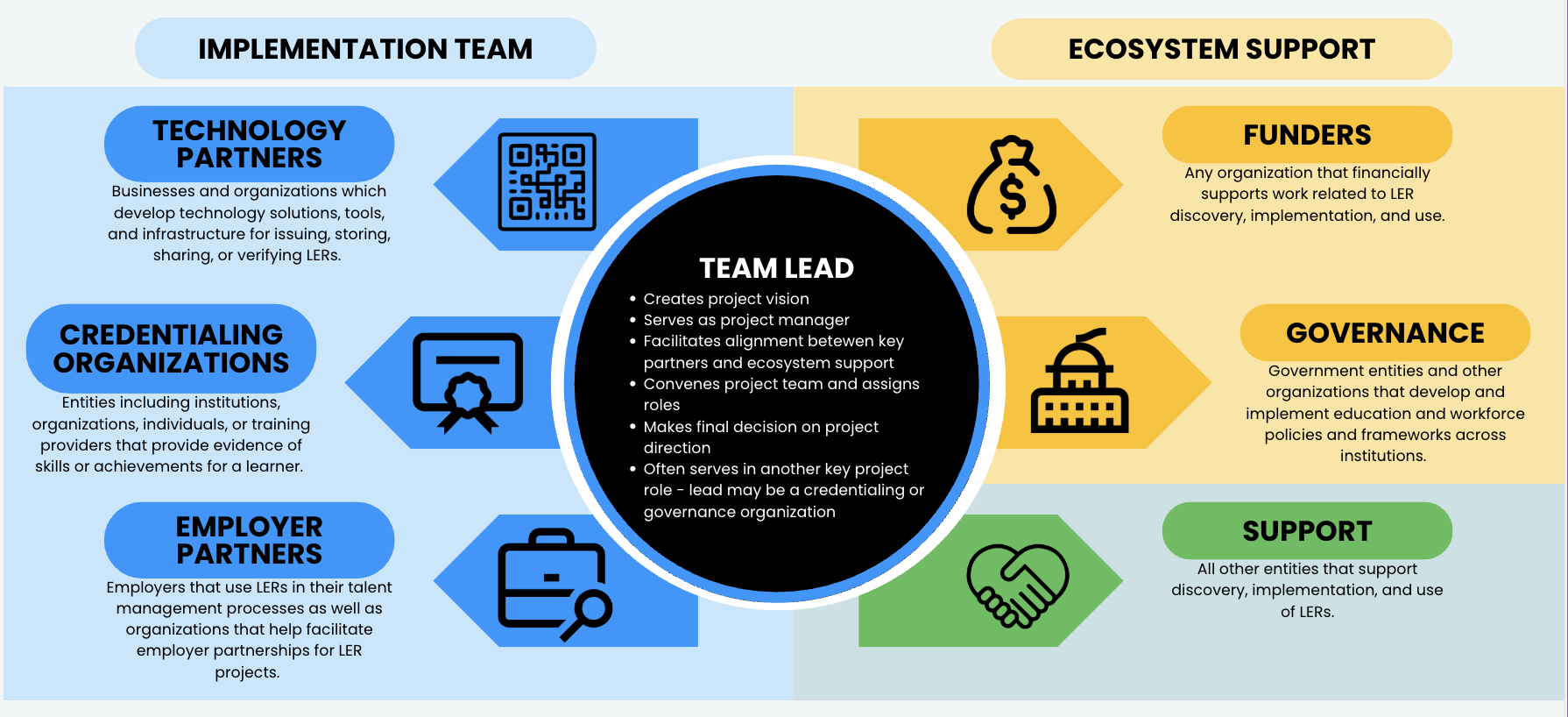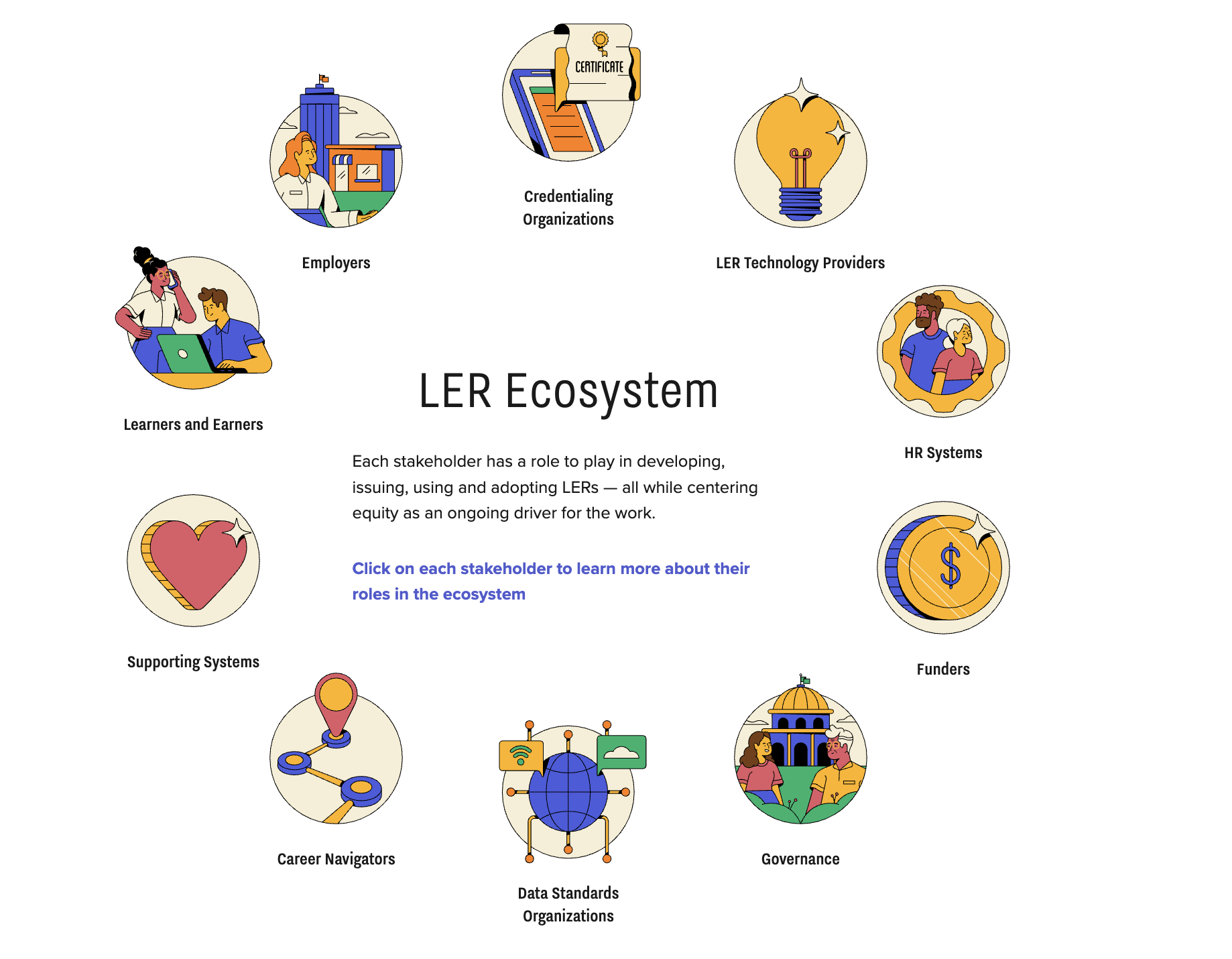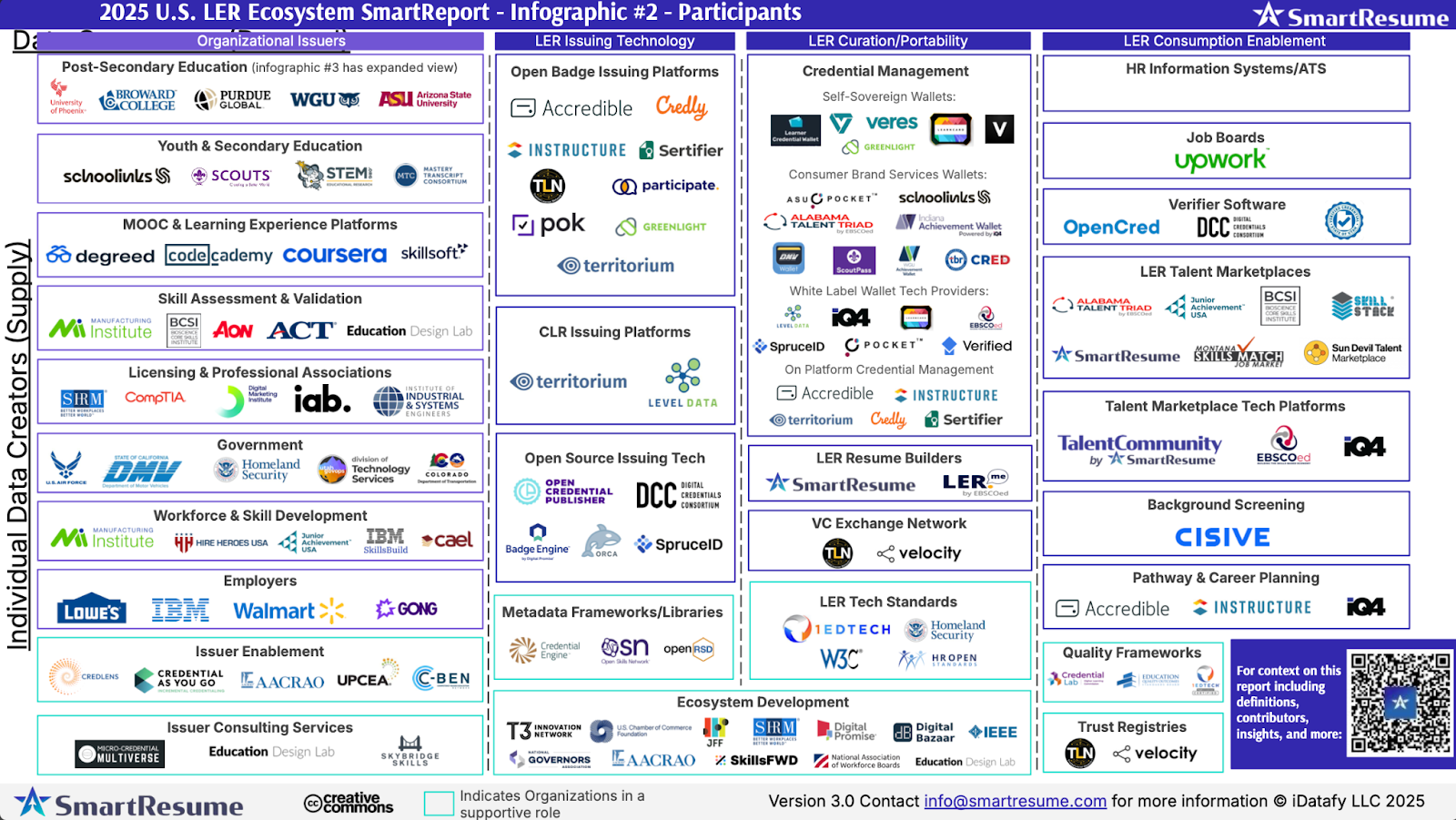Getting Started with LERs
LERs are a digital record of an individual's learning and employment. They are intended to be a tool to help people better understand and communicate their skills in a secure, verifiable way.


LERs for Beginners
Get a glimpse into the basics of implementing LERs.
Before you get started with LER implementation, it is helpful to grow your understanding of the purpose of LERs, what the ecosystem looks like and what the implementation process entails.
What is an LER?
Simply, LERs are a digital record of an individual's learning and employment experience
Who uses an LER?
There are 3 primary types of LER users: "learners/earners" (l/earners), "issuers" and "relying parties"
How can LERs benefit users?
Comprehensive digital records of an individual's skills, competencies, credentials, and employment history that may be able to show a complete picture...
What is the LER ecosystem?
The LER ecosystem encompasses all entities that have an interest in or stand to benefit from the adoption of LERs
What is the LER lifecycle?
Full lifecycle implementations are those that enable the critical stages that an LER issued as a verifiable credential goes through - from a credentia...
What is the technology behind LERs?
LERs are an open standards-based, machine-actionable, digital record of an individual's formal and informal learning and employment that is constructe...
Where are LERs being used?
LERs are still an emerging technology, though they are beginning to gain traction
What is a digital credential? Verifiable credential?
Digital credentials are the digital equivalent of paper-based credentials
What's the difference between a digital wallet and a LER?
A digital wallet is a "container" that can be used to store and share a learning and employment record
What's the difference between LER and a CLR?
A Learning and Employment Record (LER) is a digital record of learning and work that can be grouped with other individual LERs to describe their abili...
Why do I care?
As rapid technological changes impact most every aspect of our society, it is inevitable that technological disruptions will change the ways we engage...
Overview of Key Partners You'll Need
Successfully implementing LERs requires strong partnerships and strategic coordination. Each stakeholder brings a unique and critical perspective.
Key LER Project Partners
The diagram below shows the types of LER project partners we reference in this site. This framework is based on existing industry frameworks like T3's Ecosystem Map and Smart Resume’s Ecosystem map, as well as our experience in working with teams who are implementing LERs. This framework centers the team lead organization, recognizing the necessity of a coordinating entity to set a vision, cultivate partnerships, and drive collaborative progress toward shared goals.

Snapshot of the Ecosystem
LER Ecosystem Report (SmartResume)
This report outlines the organizations and companies involved in issuing, sharing, and consuming LER data in the United States in 2025.

T3 Diagram
This report features stakeholder pages that provide a brief definition and examples of the stakeholder group, an overview of their roles and work streams within the ecosystem with regards to developing, issuing, using, and adopting LERs.

LERs for Implementation
What to know before you start your own LER implementation project.
Who makes up a LER implementation team?
LER implementation requires many key partners to be engaged
How do I form the partnerships needed for a successful implementation?
Once you have set a high-level project scope, consider the partners who will best help you achieve your goals
How do I evaluate potential technology partners?
Here are a few things to consider as you are choosing technology partners:
How much does it cost to implement an LER?
The cost of an LER implementation depends on many factors

Check out our helpful resources page for insights from across the ecosystem
Discover Curated Collections of the most valuable websites, tools, and platforms to expand your knowledge of the skills-based work and learning space.
Phase 1: Getting Started
Identify Lead, Assess Context, and Establish Scope to begin your implementation journey.
Phase 2: Ecosystem Engagement
Secure Support, Form Implementation Team, and Engage Users to build your network.
Phase 3: Project Setup
Refine Scope, Define Success & Establish Evaluation Plan, and Create Action Plan & Timeline.
Phase 4: Implementing and Piloting
Develop Programmatic & Technological Foundation, Conduct User Testing, and Complete End-to-End Pilot.
Phase 5: Scaling and Iterating
Create Continuous Feedback loops, Establish Systems for Sustainability, and Work Toward Scale.

Phase 1: Getting Started
Identify Lead, Assess Context, and Establish Scope to begin your implementation journey.

Phase 2: Ecosystem Engagement
Secure Support, Form Implementation Team, and Engage Users to build your network.

Phase 3: Project Setup
Refine Scope, Define Success & Establish Evaluation Plan, and Create Action Plan & Timeline.

Phase 4: Implementing and Piloting
Develop Programmatic & Technological Foundation, Conduct User Testing, and Complete End-to-End Pilot.

Phase 5: Scaling and Iterating
Create Continuous Feedback loops, Establish Systems for Sustainability, and Work Toward Scale.
